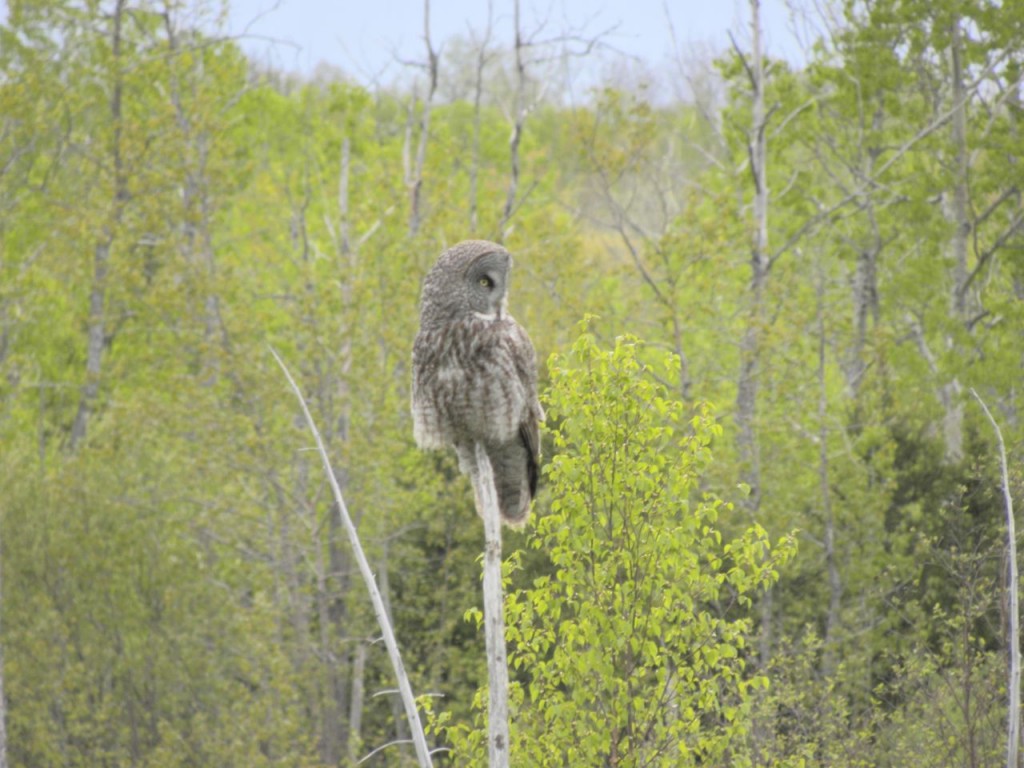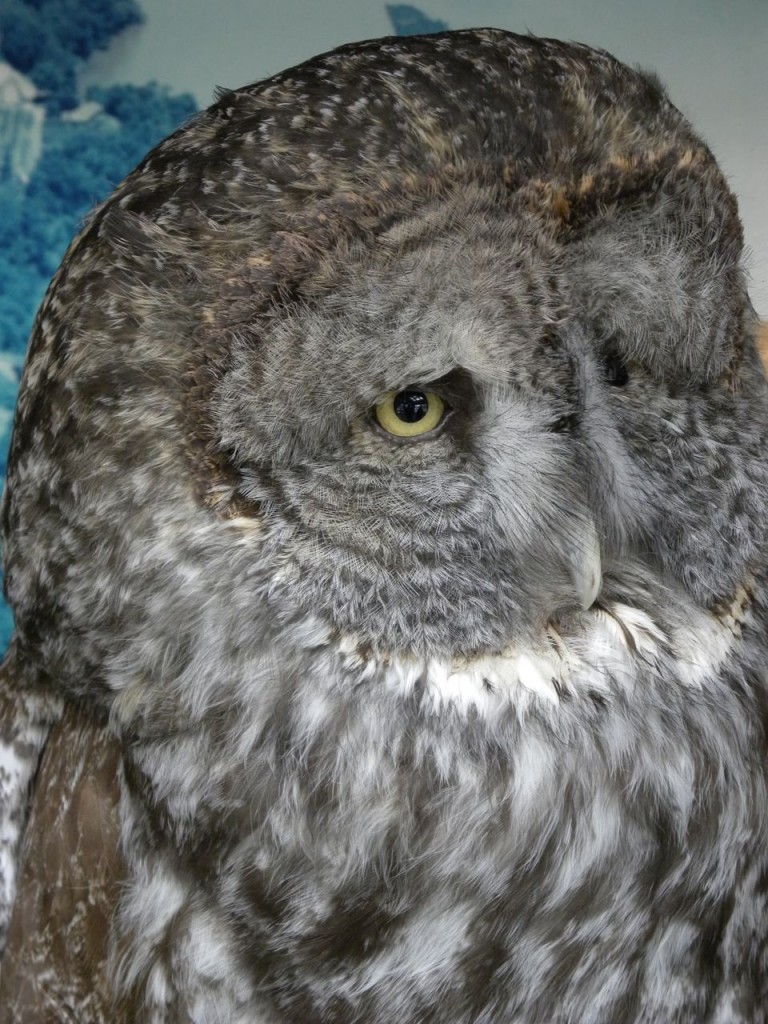28 February 2011. Vineland, Ontario. I try to stay on topic with these postings but somehow the weather finds its way into the picture quite often. This winter, weather is THE topic; those of us who are immigrants are quite stunned by winter’s ferocity while native-born Canadians (with pre-1970 memories) say it’s just a good old-fashioned Ontario winter, the way they always used to be. That’s as may be, but it’s not so good for fair weather birders like me.
As an idle indoor quest I started looking back through my photos to see what sorts of outdoor experiences I’d had on or about this date in years past. I came upon photos of a Great Gray Owl that I’d had the privilege of meeting in February three years ago. Her name is Granny and she is the companion of one of Ontario’s greatest philanthropist personalities, Kay McKeever.
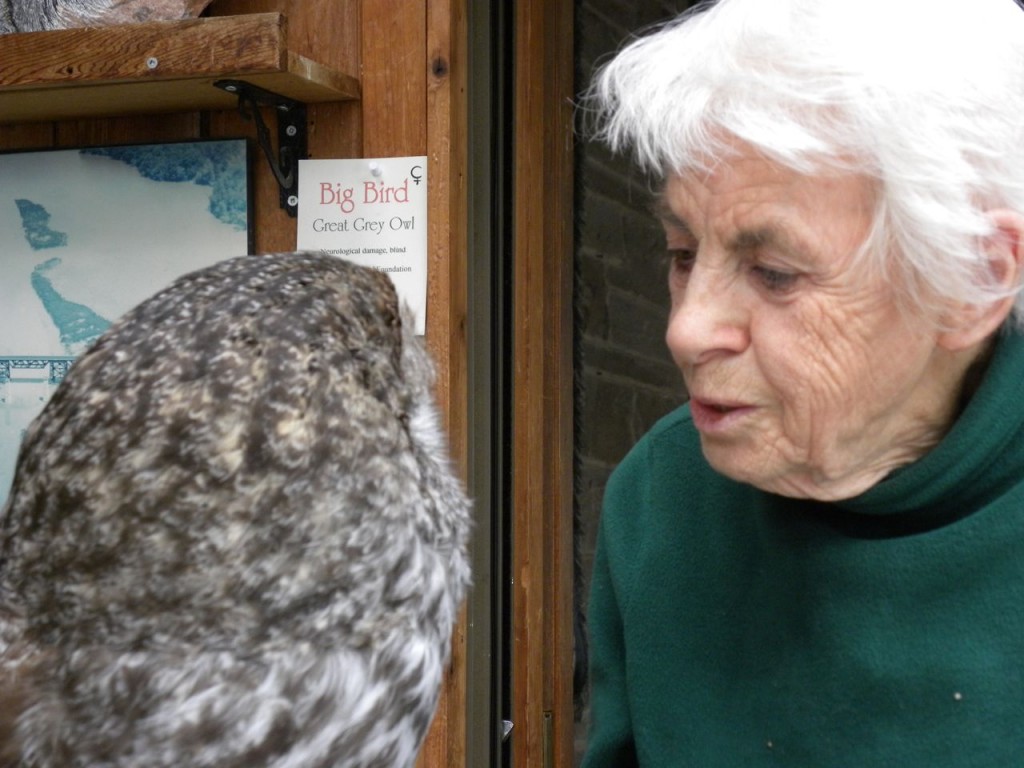
Kay and her late husband Larry started rescuing orphaned and wounded owls many decades ago. They became the de facto experts in owl rehabilitation and, while it’s a long story, the upshot of it all is that today The Owl Foundation (TOF) remains just about the only place in Canada where an injured owl has a chance of treatment, recovery and eventual release. (Learn more about TOF by following this link) TOF employs a small group of young avian biologists who care for the owls, and a cadre of volunteers clean cages, prepare food, transport birds and raise operating funds. Theirs is an almost endless job that deserves our support; new patients are always arriving.
When birders or bird-watchers celebrate the occasional winter irruption of Snowy Owls, as has occurred this winter, or Great Gray Owls, as happened some ten years ago, the unreported half of the story is that these birds don’t do well away from their home turf. Unfamiliar with urban ways, many of them collide with cars and trucks. Of course most such collisions are fatal to the bird but a few find their way to TOF where some, the not too mortally wounded, are treated and eventually returned to their native habitat; those are the good stories.
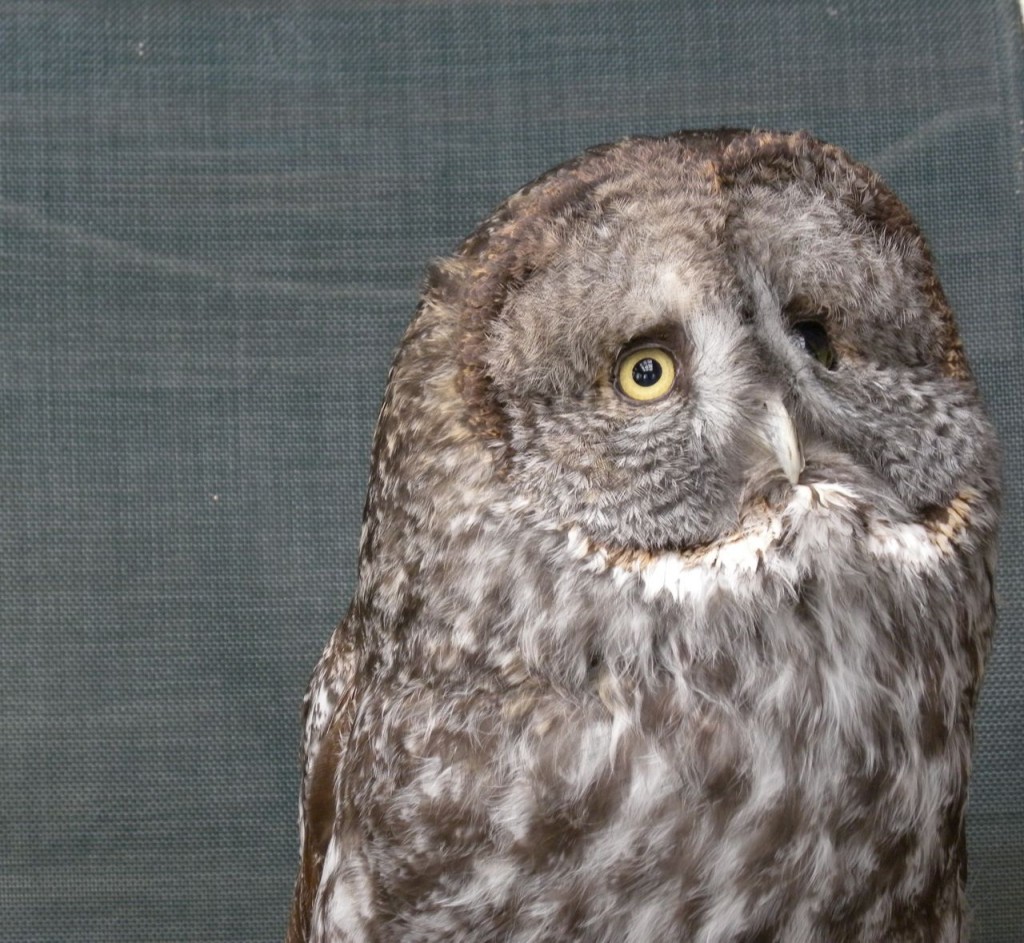 Granny is a not-so-good-but-not-totally-bad story. She was involved in a collision with a truck and while apparently restored to good health, she’s blind in one eye. Deemed unfit to survive in the boreal forests of northern Manitoba from whence she probably came, she is now the constant companion of Kay McKeever. It’s an oddly heartwarming juxtaposition; a large impassive bird that shows no sign of either accepting or rejecting its fate, spending days on the forearm arm of a gentlewoman. Granny is as alert as any owl should be, she’s constantly checking out her world, swivelling her head to left and right through 270 degrees without any evident sign that what she observes is in the slightest bit incongruous.
Granny is a not-so-good-but-not-totally-bad story. She was involved in a collision with a truck and while apparently restored to good health, she’s blind in one eye. Deemed unfit to survive in the boreal forests of northern Manitoba from whence she probably came, she is now the constant companion of Kay McKeever. It’s an oddly heartwarming juxtaposition; a large impassive bird that shows no sign of either accepting or rejecting its fate, spending days on the forearm arm of a gentlewoman. Granny is as alert as any owl should be, she’s constantly checking out her world, swivelling her head to left and right through 270 degrees without any evident sign that what she observes is in the slightest bit incongruous.
That large facial disk of feathers serves to direct sound to Granny’s ears which are offset, one slightly higher than the other, to further fine-tune her stereophonic hearing and hence ability to pounce precisely on a vole moving inches below the surface of the snow.
Great Gray Owls stand tall and look heavy, yet they are mostly feathers. An adult Great Gray Owl weighs about 2.5 lbs, half the weight of the comparably sized Snowy Owl and about the same as a Mallard.
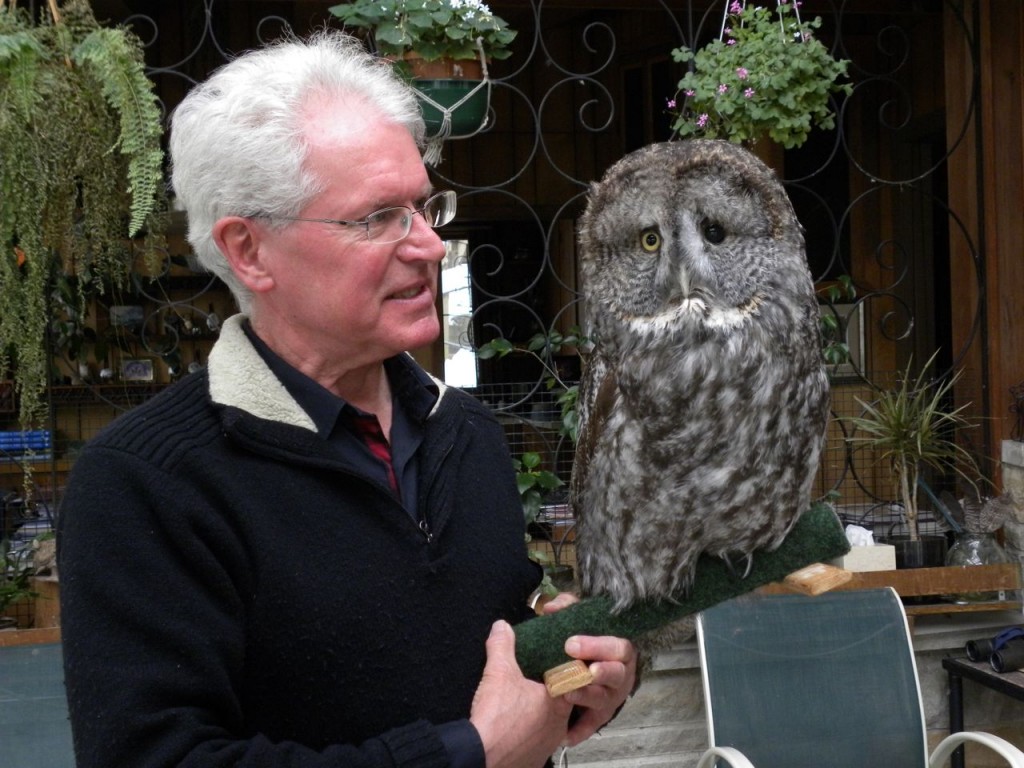
The photo below is of a Great Gray Owl seen along the margins of a large lake last May and which I eventually decided was my Bird of the Year in 2013. Even though Granny is a disabled captive bird, she is every bit as magnificent and just as much a privilege to have met.
